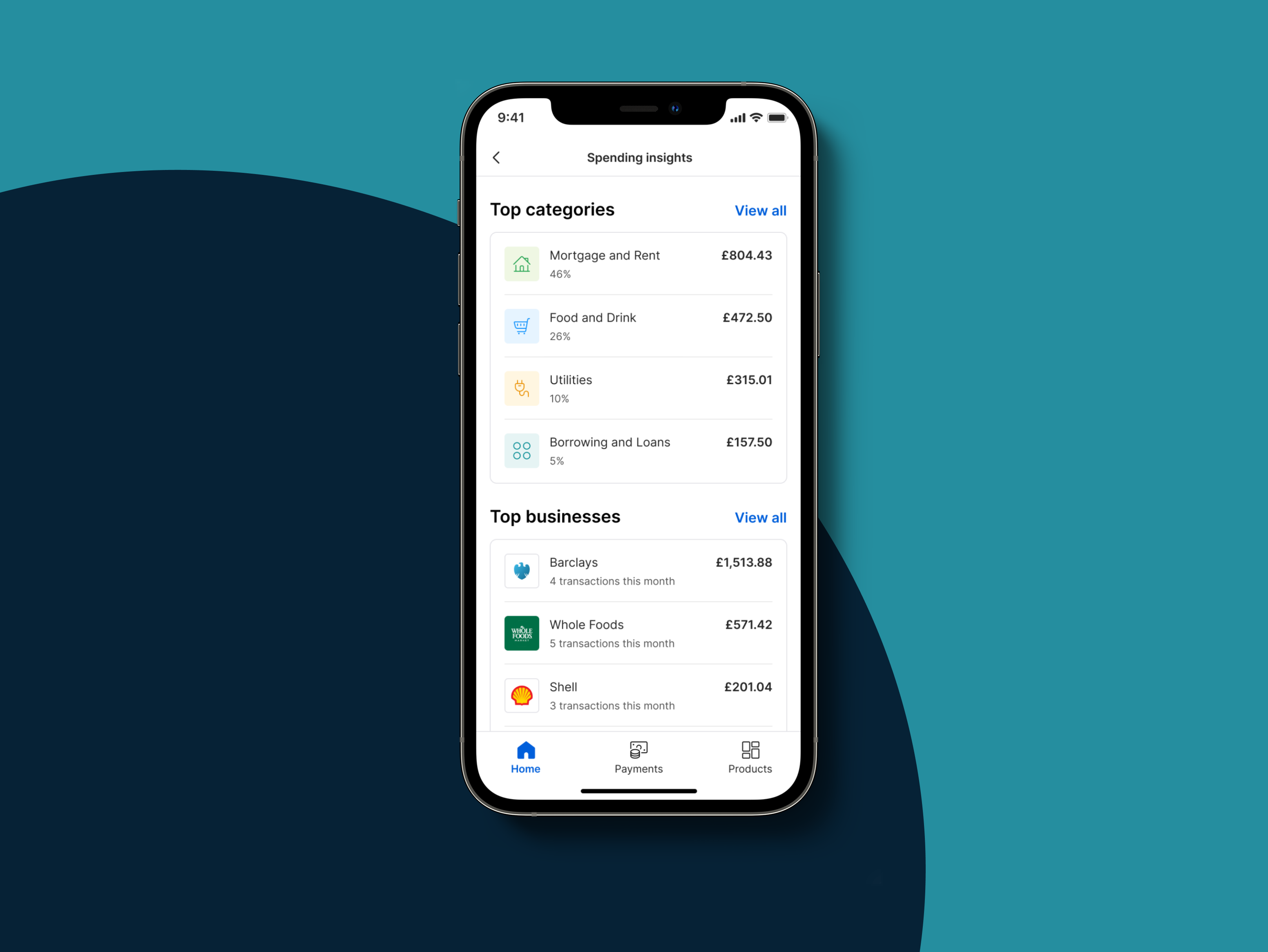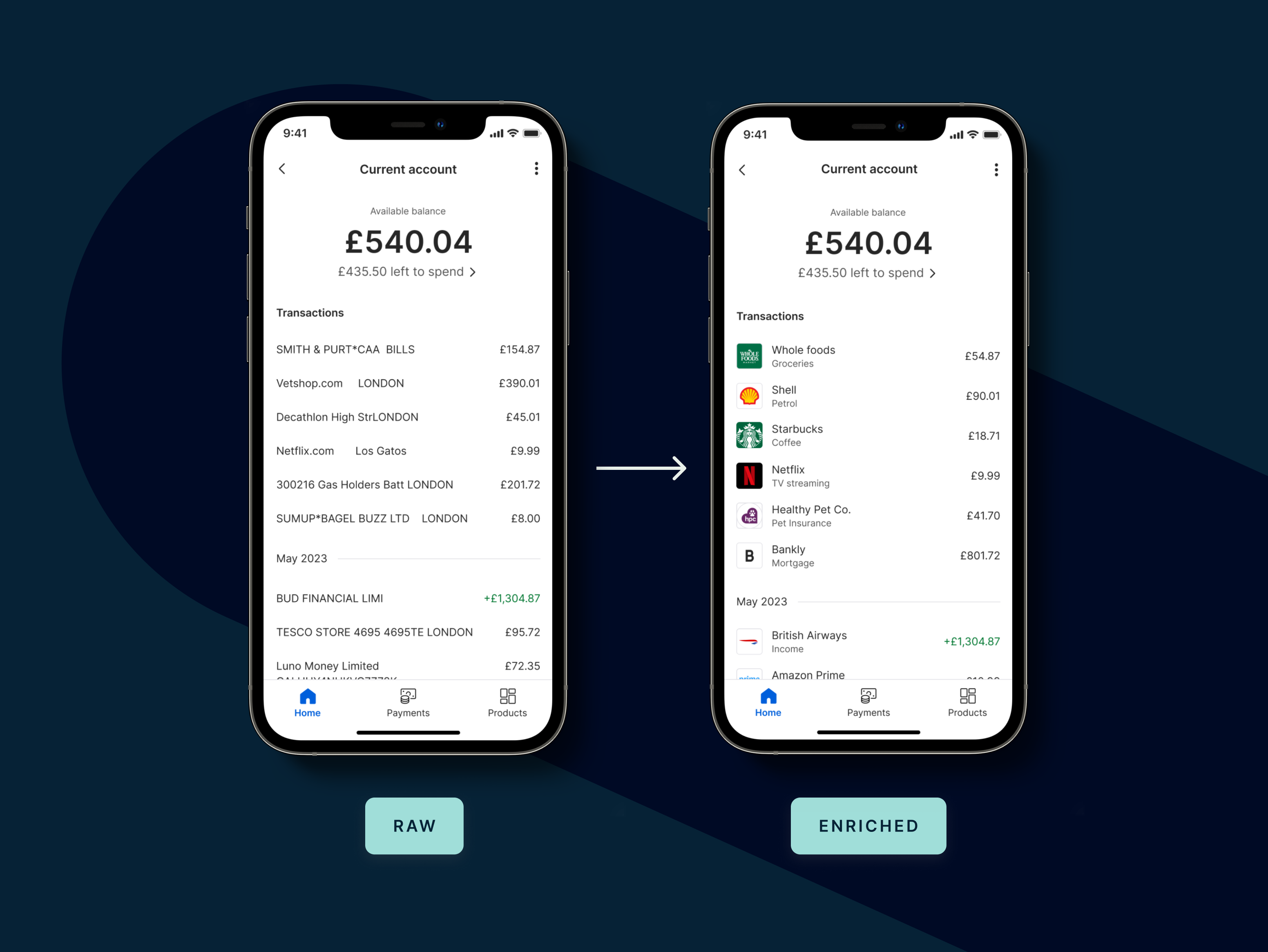Displaying Category and Merchant Totals
Displaying Totals
If you want to allow your customers to review their spending, it's best to do so by grouping transactions by categories or merchants, this can easily be achieved by using our Category Totals, or Merchant Totals endpoints. If you would like to compare spending in a category over time this can be achieved by calling the Category Totals Trends endpoint.
When displaying these totals back to customers there are a few design principles that we recommend you follow:
- Customers should be able to click into a group and see the list of transactions within it
- If displaying merchants or l2s you should also include a search bar
- Categories or merchants should be ordered by the total spent (typically over the last 30 days or current month)
- Categories that don't have any transactions should be hidden behind a 'see more' to avoid cognitive overload
- Some customers find it valuable to see the number of transactions within each group
- Business is a more customer-friendly term than merchant

Category and Merchant Totals
Displaying Transactions
Transaction descriptions are often long, cryptic and not designed to be read by humans - showing customers enriched transactions is one of the easiest ways to improve your digital channels and increases your customer's ability to recognise transactions by 47%.
For clients who intend to display transactions back to customers, we recommend utilising the suggested_description and suggested_logo fields within the transaction object. More information about these fields can be found in our Transaction object guide.

Enriched transactions
Updated 8 days ago
